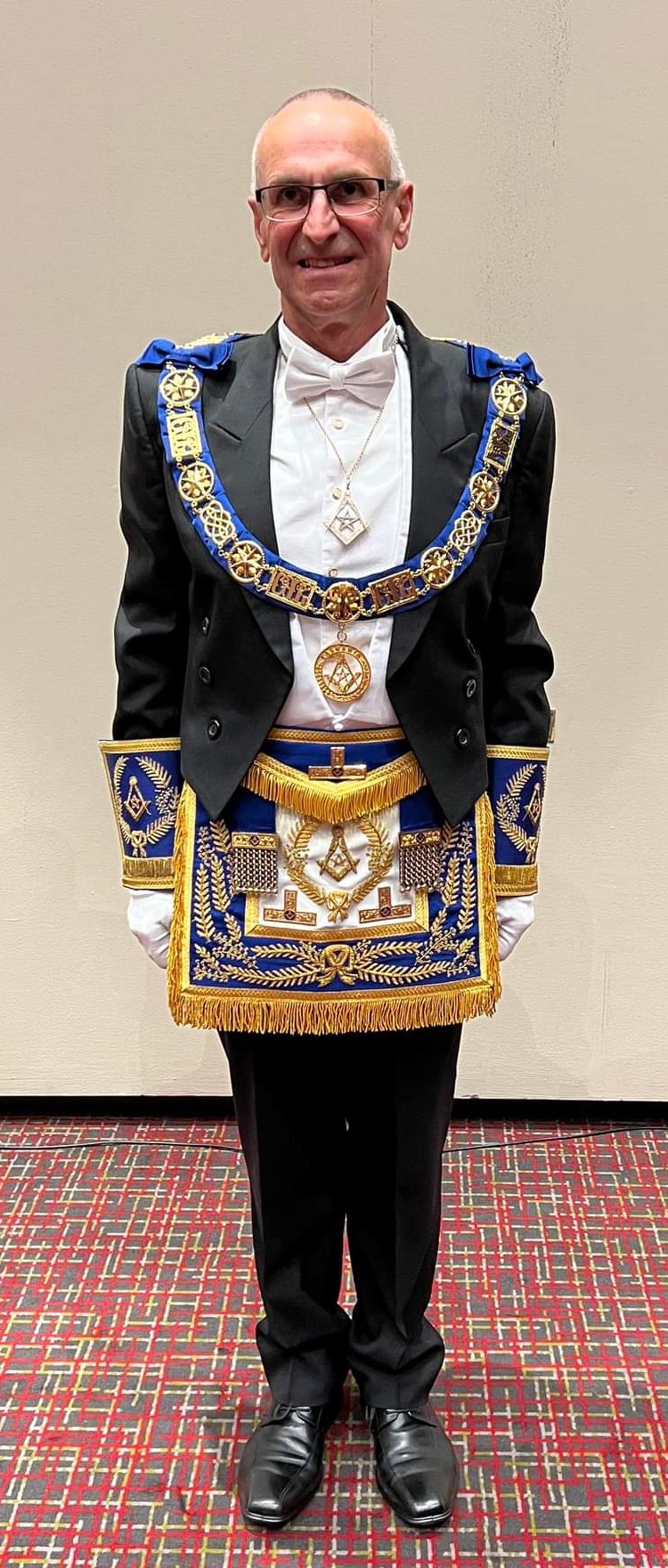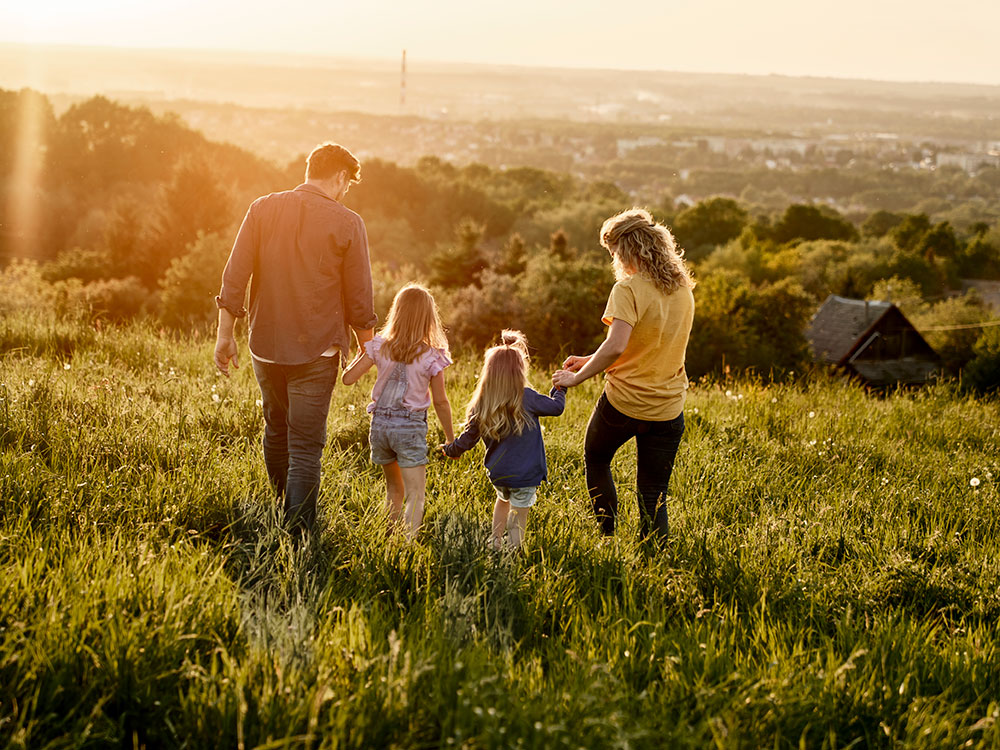Our Leaders
Grand Master
M.W. Bro. Luke John Wood
R.W. Bro. Wood is a second generation Mason, his late father, Bro. Raymond R. Wood was Initiated into Wellesby Lodge 7981 UGLE (Provincial Grand Lodge of Surrey) in 1972 and his step-father, W. Bro. Christopher R. Avis was Initiated into Lodge Steadfast 7758 UGLE (Metropolitan Grand Lodge of London) in 1977. He later affiliated with Lodge St Helier 4449 UGLE (Provincial Grand Lodge of Jersey) in 1980, becoming the Worshipful Master in 1986 and also served the Province as Provincial Grand Superintendent of Works and Grand Charity Steward.
R.W. Bro. Wood was Initiated into Lodge St Helier on the 10th December 1990.
After moving to Tasmania, R.W. Bro. Wood affiliated with Lodge Lauriston 72TC in 2011, progressing through the Officers positions and becoming the Worshipful Master on the 17th October 2014. R.W.Bro. Wood subsequently served the Lodge as Secretary.
His progression through Grand Lodge Offices commenced in 2016, when he was appointed as Grand Standard Bearer, later to be given the privilege of Grand Standard Bearer for the 2017 Grand Installation of M.W. Bro. John W Slore.
He has also held the Office of Senior Grand Deacon, Grand Director of Ceremonies and Grand Chaplain in the Grand Lodge Ceremonial Team.
R.W. Bro. Wood served on the Board of the Fred French Masonic Nursing Home from 2013~2015, the Board of Benevolence from 2016~2017 and on the Board of General Purposes from 2017 till present.
R.W. Bro. Wood’s professional background is in electronics engineering, he is a Member of The Institute of Engineering and Technology and a Registered Incorporated Engineer on The Engineering Council. His career has seen him work in London, Channel Islands and all States and Territories within Australia. He now enjoys semi-retirement.
R.W. Bro. Wood met his wife Nora in Jersey, Channel Islands and later married in Arlington, Virginia, USA. They are the proud parents of two adult sons, Nathaniel and Alexander.



Deputy Grand Master
R.W. Bro. Phillip John Kline
R.W. Bro. Kline is a second generation Mason, his late father, Wor. Bro. John (Jack) E. Kline was Initiated into Hampden Lodge 199 on 13 November 1954. He was Installed as Master on 29 September 1962 and was Confired Past Grand Standard Bearer 1 January 1993 and Confired Past Junior Grand Deacon 1 January 2005.
W. Bro. Kline was initiated into Salisbury Lodge No. 126 South Australia on 01 September 1988, passed in February 1989 and raised in July 1989 and remained a member until 2009/2010. Moved to Victoria in 1989 and affiliated with Lodge of Hospitality No. 499 where started in office as Inner Guard for the first time.
After moving to Tasmania, R. W. Bro. Kline affiliated with Tamar Valley Lodge 42TC in 1991, progressing through the Officers and becoming the Worshipful Master on the 19 November 1994.
W. Bro. Kline then spent some time in New South Wales before returning to Tasmania and affiliating with Leven Lodge No. 30TC in August 2008, progressing through various Officers and again becoming the Worshipful Master in 2014/2015 and 2015/2016 then being the unfortunate one to hand in the Charter in October 2016.
His progression through Grand Lodge Offices commenced in 2016, when he was appointed as Grand Steward, later to be given the privilege of being part of the Grand Masters Escort Team for the 2017 Grand Installation of M.W. Bro. John W Slore and then Assistant Grand Director for the 2020 Grand Installation of M. W. Bro. Phillip. F. Oddie.
He has also held the Office of Senior Grand Deacon, Grand Director of Ceremonies (2 years) Grand Chaplain (2 years) and Senior Grand Warden in the Grand Lodge Ceremonial Team.
R.W. Bro. Kline served on the Committee of the Tamar Valley Masonic Homes from approx. 1993~1995, and the Board of Benevolence from 2016~2018.
R.W. Bro. Kline’s working life started in the RAAF as an Electrician, then various jobs working Electrical, Electronic, Computer, System/Project Engineering and Project Management tasks. His career has seen him work in almost all States and Territories within Australia, USA, Germany and Malaysia. He is now working in Hydraulics.
R.W. Bro. Kline met his wife Wendy in Launceston and was married at the Gorge there in 1994. They are the proud parents of two adult daughters, Eva and Stephanie.
For More Information About Becoming A Freemason

By 1828 there were sufficient resident freemasons to justify permanent lodges in the colony, not dependent on the presence of the members of the regiments who were often widely dispersed. Some time after March 1827 Tasmanian Lodge was the first stationary lodge to be formed, followed by the Lodge of Brotherly Union in 1832. In 1834 Tasmanian Operative Lodge was sanctioned by the Grand Lodge of Ireland. It prospered and in 1890 became lodge #1 on the roll of the Grand Lodge of Tasmania. Freemasons could now provide social and educational activities for members and organise charitable services for the needy.
Lodges were also established in Launceston and other centres. Some of the warrants were transferred as populations changed because of the volatility of the economy, particularly the mining industry. Lodges at Lefroy, Ringarooma, Evandale and Hamilton-on-Forth were short-lived.
The first lodges were all Irish. The first English lodge, the Tasmanian Union Lodge, was formed in Hobart in 1844. Scottish lodges were formed in the north: St Andrew’s Lodge, Launceston, 1877; Lodge of Perfect Unanimity, Launceston, 1881; Concord Lodge, Latrobe, 1882; Dorset Lodge, Scottsdale, 1885; Robert Burns Lodge, Beaconsfield, 1886.
In June 1890 all lodges relinquished their warrants from their parent Grand Lodges and formed the autonomous Grand Lodge of Tasmania. The first Grand Master was the Rev RD Poulett-Harris, headmaster of the Hobart High School. From 1890 to 2005 some 33 Grand Masters have presided over Freemasonry in Tasmania. They have come from all walks of life – governors, bishops, educators, bankers, doctors, businessmen and civil servants. The numbers reached a zenith in the late 1970s, with 79 lodges and over 8000 members. In 2005 there were 50 lodges with a membership of 2,100.


The hallmark of Masonic activity has been philanthropy within the wider community. A Masonic Benevolent Fund was formed as early as 1843 and became an integral part of the programme of the Grand Lodge of Tasmania. The fraternity rarely sought recognition for its benevolent activities. It has regularly supported charitable agencies such as Red Cross, Salvation Army, St Vincent de Paul, City Mission and many more. It has subscribed to a large number of relief appeals, both interstate and international.
Pictured left: Frederick Burrell in Lodge Regalia, 1940 (AOT, PH30/1/5508)
In 1945 when the outcome of the Second World War was certain, consideration was given to establishing suitable memorials to mark the cessation of hostilities. The Masonic involvement in Aged Care began to take shape, developing into the Masonic Homes at Lindisfarne and the Peace Haven complex at Launceston. In the south, from 1951 members of Tasmanian Operative Lodge #1 worked at weekends to construct the first dwelling on the site selected for Masonic Homes in Lindisfarne, on the Ballawinne site. There has been a succession of developments, with new buildings and new properties at Lindisfarne and Kingston. These facilities now serve more than 200 residents.
The provision of aged care facilities in northern Tasmania began in 1962/3 when the Fred French legacy enabled the building of a nursing home. Since then, a fully accredited facility that provides a wide range of services ranging from independent living and low care to a dedicated Dementia Unit have been developed. A Day Care Centre caters each week for up to 250 persons from the local community.

A more recent activity is the Masonic Centenary Medical Research Foundation, established in 1985 to finance medical research into problems associated with ageing, especially neurological conditions. The Foundation has sponsored research projects, provided fellowships for medical researchers and purchased specialised equipment for researchers. Other Masonic initiatives focus on education and the provision of scholarships for tertiary studies.
Further reading and references: M Yaxley (ed), The first one hundred years, 1890–1990, Hobart, 1990; K Henderson, The Masonic Grand Masters of Australia, Melbourne, 1988; A Lowe, History of Tasmanian Operative Lodge No. 1 T.C. 1834–1984, Hobart, [1988]; MG Linton, Freemasonry in Tasmania up to 1890, Hobart, 2004.
